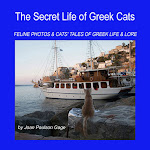Because
today is World Laughter Day and we all could use a little help cheering up, I'm re-posting
the story of Harvey Ball, the artist from Worcester, MA who created the
original Smiley Face fifty five years ago and never made more than $45 from
his creation. Then, in 1999, disturbed by the crass commercialization
of the Smiley, Harvey created World Smile Day--the first Friday in
October every year--to promote the true meaning of the Smiley Face. So
like World Smile Day in October, today--the first Sunday in May-- is a good day to do a random act of kindness as Harvey put it--improving the
world "one smile at a time."

When three of Harvey Ball’s comrades were killed by a
wayward shell as they stood next to him in Okinawa during World War II,
he did not ponder if fate had saved him for a greater
destiny. Harvey, a tall, lanky, laconic Yankee from Worcester, Massachusetts,
was not much given to introspection, socializing, talking, or even
smiling. But when he died in 2001 at the age of 79, Harvey had figured out
his purpose in life. As he
told People Magazine in 1998, “I taught
the whole world how to smile.”
Harvey Ball, born and raised in Worcester, was the
creator of the Smiley Face--that round yellow image that now beams
out from Wal-Mart ads, Joe Boxer shorts and internet icons. When, in December of 1963, he picked up a black pen and a yellow piece of paper
and drew the world’s first Smiley Face, Harvey, a self-employed
commercial artist, was working on an assignment from a Worcester
insurance company suffering from employee discontent after a merger. They wanted a campaign and buttons to raise company morale. They
ordered 100 yellow Smiley Face buttons and then, when those disappeared
almost over night, they ordered
10,000 more.
Harvey later figured out that his compensation for
creating the Smiley Face button for the Worcester Mutual Insurance Company
added up to about $45.
When the lawyers for the company tried to copyright the image eight years later, they learned that it was
impossible, because the image, reproduced 50 million times in the year
1971 alone, was in the public domain.
By the mid-seventies, according to the curators of the Worcester Historical Museum, the image had fallen
out of favor.
But Smiley made a significant comeback in the late
1980’s when interest in acid and other psychedelic drugs became a major
cultural phenomenon. The icon was embraced by trendy downtown club
kids. Those who grew up in the 1970’s—today’s most desirable consumer
demographic —view the image with nostalgia. (Some of them also think it was
created by Forrest Gump, the fictional movie character.) When votes were taken by the U.S. Post Office for icons to represent the decade
of the 1970’s, the most popular image by far was Smiley, whose stamp
was issued in 1999.
Brothers Murray and Bernard Spain of Philadelphia
added the phrase “Have a Happy Day” and took in a reported one million
dollars in sales of Smiley products in the first six months of 1971 alone. In 1998, French Businessman Franklin Loufrani claimed that HE had
created the image in 1971, and he proceeded to trademark the face in 80
countries. When faced with Harvey Ball’s earlier creation, Loufrani
replied with a Gallic shrug:
“I don’t care if he designed the
Smiley face. We promote, we own, we market.”
Riled up by “the France guy” as he put it, Harvey in 1999 created World Smile Day—the first Friday in October-- to
promote the true meaning of the Smiley Face. And he trademarked it. Harvey said, “World Smile Day® is open to every person on the
planet. No matter what color they are, or who they might pray to, no
matter what country they live in. World Smile Day®
simply asks each person to live the day with a generous heart, do one
kind act, to help one person smile. Acts of kindness and smiles are
contagious."
Every reporter who interviewed Harvey Ball asked him
the same question: was he angry that he never made more than $45 from the
creation that could have made him very, very rich? To every reporter he patiently gave pretty much the same reply: “Hey, I can only eat
one steak at a time, drive one car at a time. I’m not ticked off about it. I don’t mind getting up in the morning and going to work. They
ask me why I’m not upset. I
just get satisfaction from it being so widely used and that it has given so many people pleasure.”
Even though he didn’t want to profit from it, Harvey
Ball did want recognition for creating the image whose smile has
been called more famous than the Mona Lisa’s. He said
“Smiley is one of the greatest pieces of art ever created, as simple as it is. It’s got a very, very positive message. Anybody can use it and reproduce it
and it reaches everybody regardless of language, religion,
nationality, all those things--as compared to some of the art you get today
which you haven’t the faintest idea of what you’re looking at…I’m glad
Smiley came from Worcester. The
city should make more of it. Because no
other city has this.”
After Harvey died in 2001 in Worcester, his son,
Charles, said : “He was proud and pleased to have served his country and
raise a family…He died with no apologies and no regrets. His moral compass stayed on northh and never wavered."
And he left us the legacy of a smile.




















